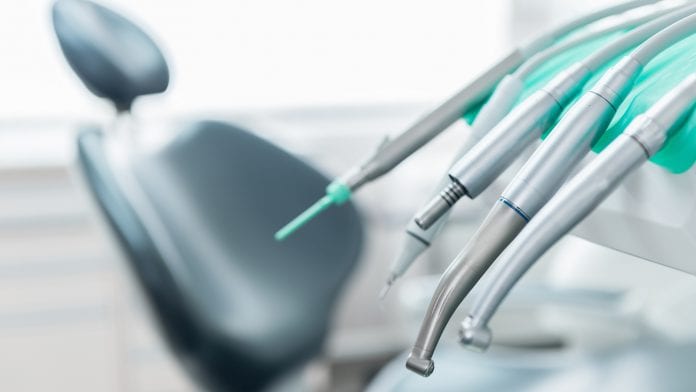
A new feasibility study has demonstrated the effectiveness of measures that mitigate the spread of infection during aerosol generating dental procedures.
The COVID-19 pandemic has disrupted many routine healthcare services and dentistry has been widely impacted by COVID-19, with many reports suggesting dental health may take years to recover to its pre-lockdown state. In particular, aerosol generating procedures (AGPs) in dentists have been difficult to carry out due to the risk of infection spread in the aerosol particles.
{my}dentist approached NPL scientists, the National Metrology Institute for the UK, with expertise in Air Quality measurements, to study Aerosol Generating Procedures (AGPs) and the associated monitoring and measurement (in real time) of aerosol particle concentration in a clinical space during patient treatments. This initial feasibility study provides insight for the dentistry industry, which employs more than 40,000 practitioners in the UK, and to the general public who rely on this health service.
Effectiveness of mitigation methods
Scientists at NPL conducted a preliminary investigation at a {my}dentist surgery using an Optical Particle Counter (OPC) to assess the airborne particle number concentrations present and how they are affected by different AGPs. Current Dental procedures and associated guidance is based on a number of assumptions linked to air quality in each clinical setting. One aim of this study was to gauge particle removal times in a real-world dental surgery seeing patients.
The study presented promising conclusions that the aerosol mitigation methods used in dentists are effective, and that there is limited correlation between the aerosol peaks detected and the clinical treatments being conducted.
The study identified several background aerosol peaks from other sources inside or outside of the dental surgery. All aerosol events were found to diminish to the background level within 10 minutes on average and 20 minutes at the upper time range regardless of their source.
NPL are now looking to conduct further studies using a wider range of OPC instruments within multiple surgeries provided by {my}dentist to further assess the impact of ventilation conditions, sampling position, mitigations and instrument types on aerosol generation, detection, and behaviour. This study will be in a position to inform the suitable fallow period, PPE required, and associated safe working practices across a variety of clinical environments.
Jordan Tompkins, Higher Research Scientist at NPL’s Air Quality & Aerosol Metrology Group, stated: “This is a great first step to measure what is going on in real surgeries with real patients. I feel that NPL is well placed to bring a scientific rigour to these studies and to make sure that we have a solid base on which to build future policy.”
{my}dentist Group Clinical Director, Nyree Whitley, added: “This study provides the most authoritative clinical evidence yet that the chain of safety measures across dental practices are highly effective and that aerosols settle within 10 minutes on average, and 20 minutes at most.”








